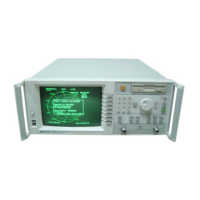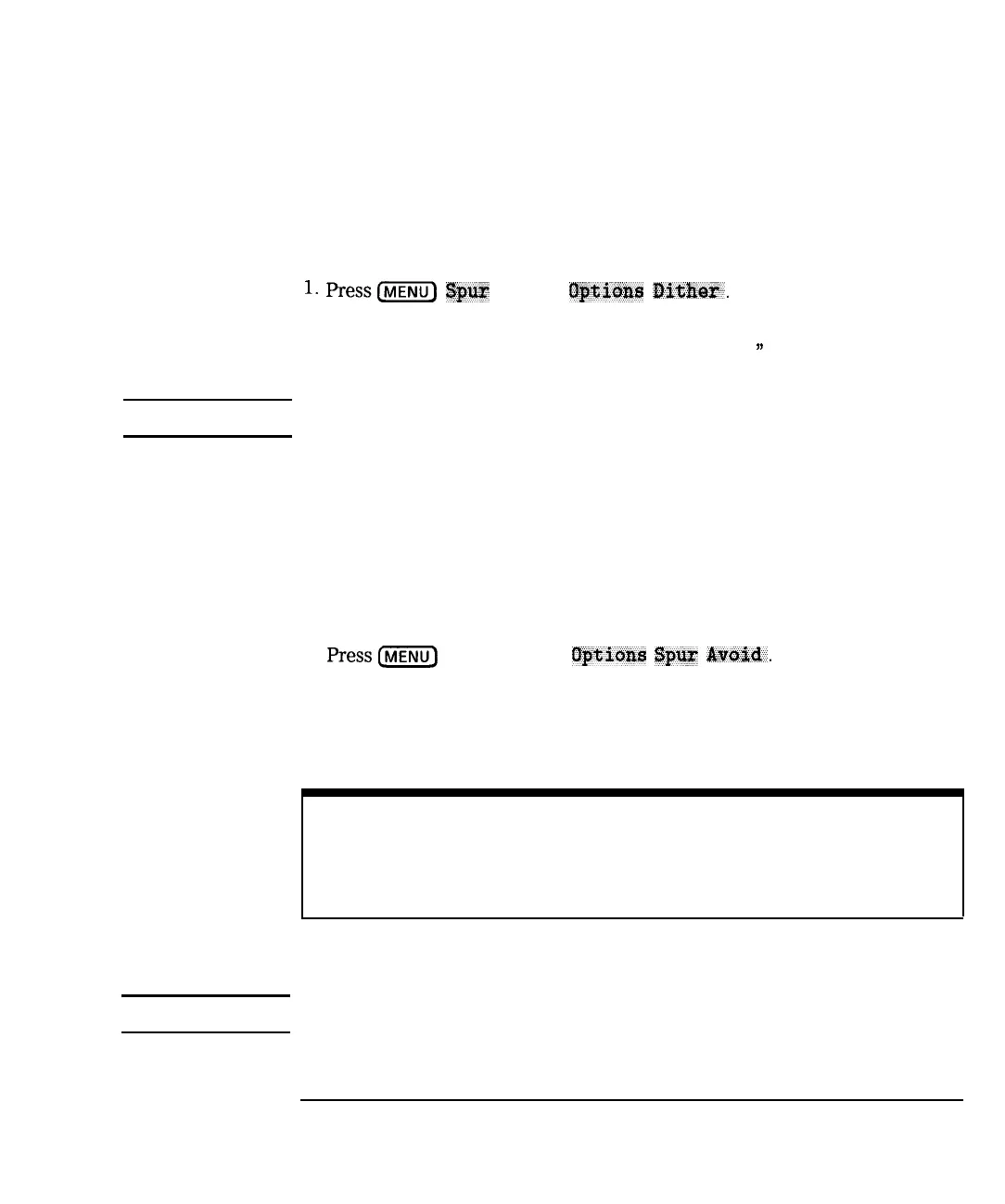Optimizing Measurements
Reducing Trace Noise
Dithering to Shift Spurs
Dither shifts all spurs by a small amount once, thus it imposes no sweep time
penalty. But some spurs occurring within the measured frequency band
may not be shifted out of band, and others may be shifted in. Therefore
dither is most effective for narrowband measurements with a user defined
measurement calibration. lb activate dithering:
1.
PressCMENU]
Spur
Avoid
Options
Ditkw.
2. Make a user-defined measurement calibration. Refer to Chapter 6
“Calibrating for Increased Measurement Accuracy,
n
for calibration
procedures.
CAUTION
The measurement calibration must be performed with the same spur avoid
option used in the measurement or your results may be invalid.
Activating Spur
Avoidance
When you activate spur avoidance the analyzer sweeps to a point before a
spur, stops the sweep, shifts the spur, sweeps through the spur location, then
shifts the spur back and continues the sweep. The analyzer determines which
spurs need to be avoided with an algorithm based on frequencies, number of
points, sweep time, and system bandwidth.
lb activate spur avoidance:
1.
2.
Press-
Spur Avaid Optiaw
Spur
Amid.
Make a user-defined measurement calibration. Refer to Chapter 6
“Calibrating for Increased Measurement Accuracy,” for calibration
procedures.
NOTE
Using spur avoid increases sweep time. Since there are more spurs at the lower frequencies, the time
penalty can be reduced by setting the start frequency of the measurement as high as possible.
CAUTION
The measurement calibration must be performed with the same spur avoid
mode used in the measurement or your results may be invalid.
5-15
I-

